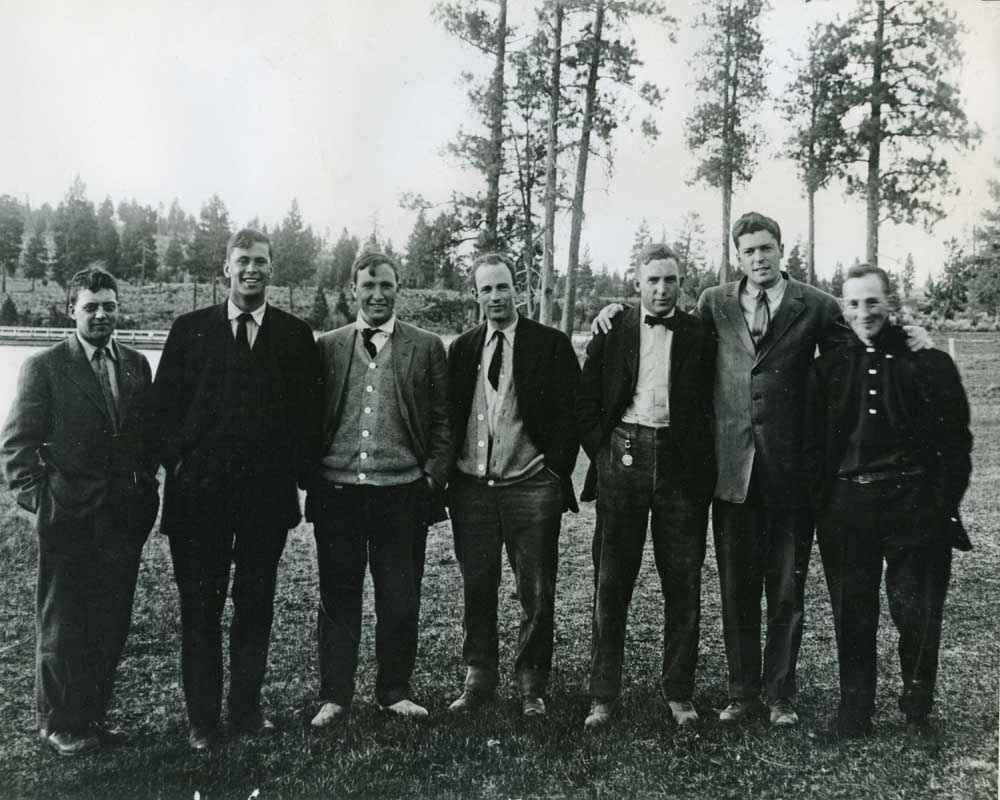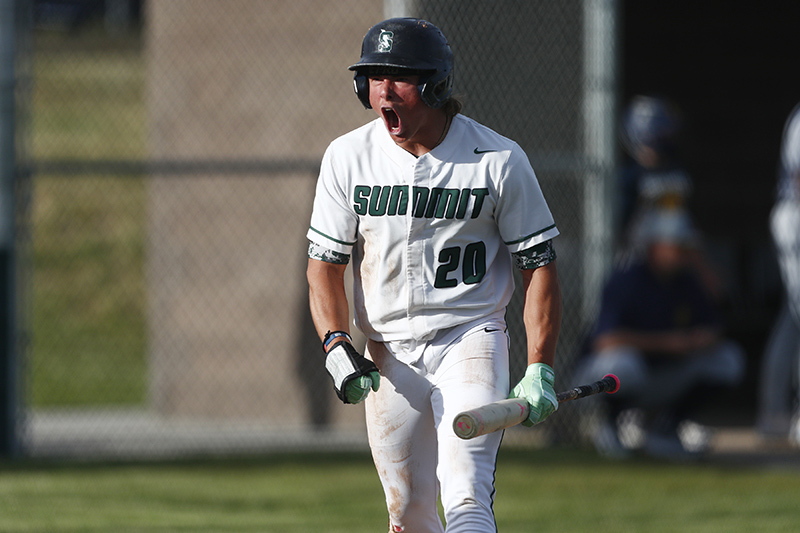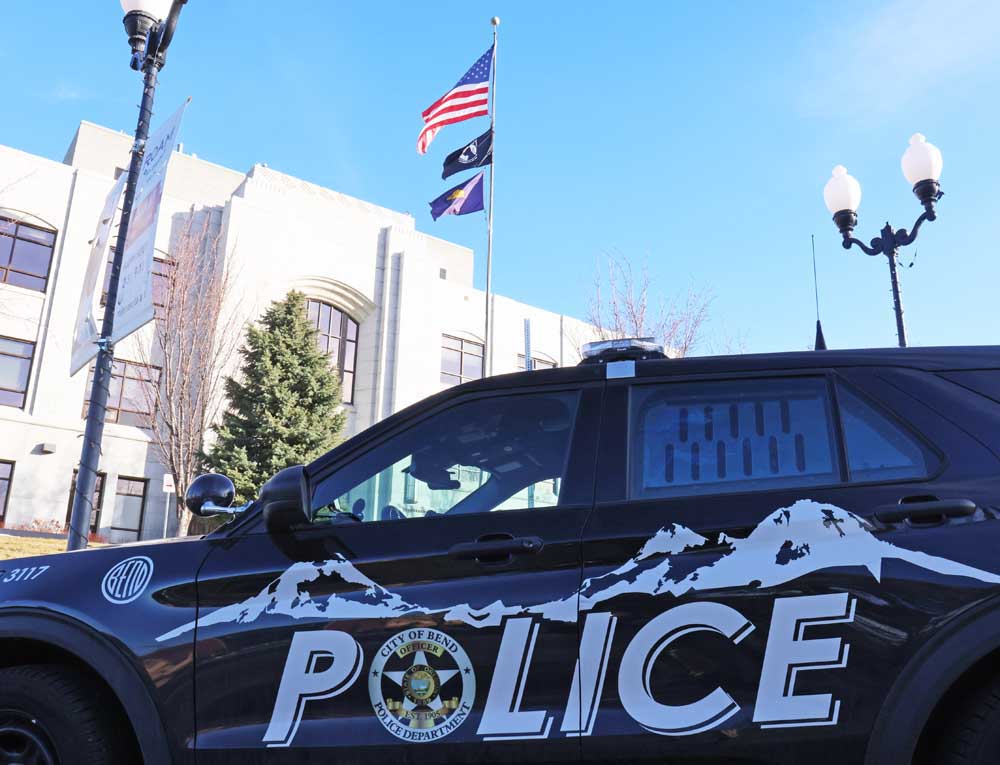Bend’s first mayoral election? Not at all.
Published 12:00 am Tuesday, August 21, 2018

- Here is full caption: Notation on back of photo says, "1. Scott, 2. Nig Pringle (Arthur Melrose), 3. Dwight Davis, 4. Temp Robinson, 5. H.A. Miller, 6. George Palmer Putnam, 7. Robert B. Gould - designer of Hwy. 97 and #20 to Sisters."
When Bend voters in May decided to directly elect their mayor, the change was celebrated as a first for the city.
City councilors had previously selected a mayor from among themselves following elections every two years. Now, six candidates are running for mayor, and their election Nov. 6 is thought to be new to Bend.
Trending
But that is not the case, according to the Deschutes Historical Museum and Society.
From Bend’s founding in 1904 until 1928, the city directly elected 14 mayors. Voters changed the city charter in 1928 to allow the City Council to select a mayor, which has remained in place for the past nine decades.
Western towns in the 1920s felt changing the form of government would be more efficient and make mayors less prone to corruption, according to Kelly Cannon-Miller, Deschutes Historical Museum director.
The change in Bend seemed especially necessary after a political drama that arose in 1921 during the tenure of Mayor Edgar Dewitt Gilson, according to archives at the Deschutes Historical Museum.
Gilson, an aggressive politician, tried to push forward a bond measure for a water project that he would have personally profited from as the owner of a land development company. The Bulletin revealed Gilson’s conflict of interest, and the bond measure ultimately failed.
Meanwhile, Gilson was feuding with Police Chief Robert Fox, claiming the chief was not running the department effectively.
Trending
Gilson convinced the City Council to fire Fox in March 1922. That fall Fox ran for mayor and beat Gilson. Fox was the last directly elected mayor.
“Fox had a lot of support,” Cannon-Miller said, “between the water project and the very public fight with Gilson.”
Fox was re-elected twice, and left office in 1928. The community then decided it was time to change to a council-appointed system for mayor, and open the door to a city manager form of government.
“It was about making our city government more efficient,” Cannon-Miller said.
Bend’s first mayor was Arthur Lawson Goodwillie, who took office in 1905 at age 27. He was considered the youngest mayor in the country at the time.
When he was declared mayor in November 1904, the Bend Coronet Band showed up to serenade him at his house. The house at 875 NW Brooks St. still stands next to the Riverfront Plaza.
“After the results of the ballot had become known, the Bend Cornet Band got itself together and marched to the Goodwillie bungalow and serenaded the victorious head of the ticket. There was music, remarks and other things suited to the occasion,” according to the 1904 Bulletin article.
Between 1911 and 1915, Bend elected three mayors who are still well-known locally today.
Dr. Urling C. Coe, who served as mayor from 1911 to 1912, was the author of “The Frontier Doctor,” a largely autobiographical book about his pioneer days in Bend as a local physician.
Early Bulletin editor and publisher George Palmer Putnam served as mayor from 1912 to 1913. Putnam, who later married famed aviator Amelia Earhart, came from the high society of New York City to Bend in 1909 looking for adventure and business opportunities, Cannon-Miller said.
Becoming mayor was part of Putnam’s role in the booming Western town.
“He wrote about the fact that he pulled into Bend and found it to be the last of the Western frontier,” Cannon-Miller said.
Following Putnam, Harry “Ham” Miller served as mayor until 1915. He founded Miller Lumber Co., which his family still runs today.
Miller married his wife, Sarah, in 1914 while he was mayor. Their marriage prompted a parade through the town with Miller enclosed in a cage. The joke was that marriage is like being in jail.
Bend mayors at that time were mostly young men in their 20s, and the parade was an example of their youthful behaviors, Cannon-Miller said. But they were also highly motivated to launch a new city, she said.
“That’s a really cool thing about the history of Bend. You have all of these educated 20-somethings right out of college looking for their first opportunities,” Cannon-Miller said.
The early mayors of Bend led a small hamlet that was starting to grow. By 1911, Bend had a railroad, and two lumber mills opened in 1916. The town went from hundreds to thousands of residents in those years.
In the 1920s, arguments were being made to let the City Council appoint the mayor and hire a city manager to handle the growing city.
“What was good for a town of 1,200 is no longer the best thing for a city of 8,000,” a 1922 Bulletin editorial read, arguing for the city to stop directly electing mayors.
Cannon-Miller finds it amusing that the same argument is being made today, but for why Bend should directly elect mayors.
Bend Mayor Casey Roats said in April the change to directly electing a mayor reflects the city’s growth.
“If we were a sleepy little town where not much happened or changed, I could see leaving things as they are,” Roats said. “We are rapidly developing into the most important and dynamic city in the state.”
No matter the motivation, the attention surrounding this year’s mayoral election is understandable, Cannon-Miller said.
It’s not the first in Bend, but it’s the first in recent memory.
“Who was around to remember 1928?” Cannon-Miller said. “No one anymore.”
— Reporter: 541-617-7820, kspurr@bendbulletin.com








